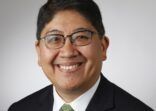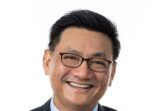“Europe is a big importer of energy, so reduced oil prices is really good for consumer spending,” Dhingra said in an interview with Fund Selector Asia. “If manufacturing were to pick up from its current low, that would be good for export-oriented countries. Germany, for one, should be a beneficiary.”
Coutts’ biggest overweight is Eurozone equities. Dhingra said that valuations have corrected, in part due to the investor worries over China’s slowdown, while corporate earnings look better than a year ago.
The firm is also overweight Japan equities, and is warm to investing in companies included in the Japan Nikkei 400 index, which tracks companies that meet stringent criteria on market capitalisation, return-on-equity and disclosure of earnings information.
“The Nikkei 400 index is very good as it is orientating companies in the right direction toward profitability. If global growth [for 2015] is 3.5% and the slowdown in China is modest, this year will be a good one for Japan. We are quite positive on Japanese equities.”
However, Dhingra declined to name any specific funds the firm has recently invested in.
In emerging markets, Coutts is overweight China and India. He noted that the Chinese consumer spending story is intact and H-shares are generally under-valued.
“We have seen a trend of increasing [consumer] spending over the last six month, plus household debt tends to be low in China,” Dhingra said.
In India, clients have a growing interest in fixed income.
“Three to four months ago, our clients were sitting in very defensive positions [in India equities]. Since the market correction [this summer], we have seen more buying.
“In India, fixed income products are doing very well,” he added. “We have seen clients put in significant amounts,” Dhingra added.
Other emerging markets, such as those in ASEAN, are largely unattractive. He cited high valuations and political uncertainty in markets such as Malaysia and Thailand.
“In the ASEAN bucket, expect for Singapore, we are broadly underweight.”
Fund selection process
Coutts’ global team maintains an approved list of 100 active and 100 passive funds.
The 100 active funds would consist of 22-23 asset classes (equivalent to 65-70 funds), 10-15 liquid alternatives and several niche funds. He believes that private banks, by comparison, maintain 2,000-3,000 funds.
When it comes to onboarding new funds, Dhingra said that new asset classes are always interesting. He noted that several years ago, the space of contingent convertibles (CoCos) opened up and Coutts became interested when the sector became deep enough for funds to be launched.
Downgrades of approved products are usually triggered by performance fluctuations or the exit of a lead manager.
“These factors will lead to a downgrade and we could start looking for substitutions or replacement products,” Dhingra said.
Currently, Coutts’ top three fund selection priorities are finding a US growth fund, adding more convertibles and supplementing its Japanese and European equity funds.
“We always struggle to find high quality US fund managers who are consistent outperformers.”
On the passive side, the firm uses ETFs, specifically for exposure to China equities and to the US technology sector.
“Technology ETFs are a better way to play the technology sector as we have not found an active fund that can sustainably deliver returns.”
















